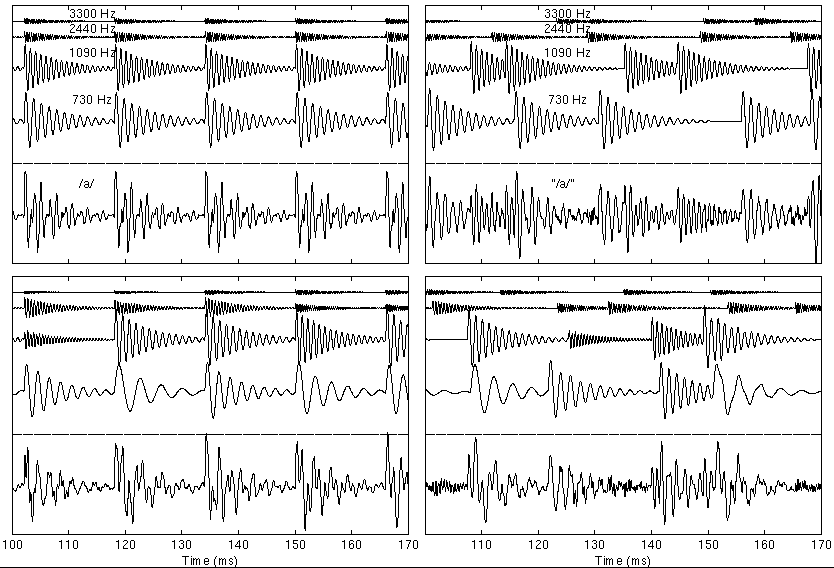| Damped Vowels |  |
Pathological Vowels |  |

| Musical Rain with Pitch |  |
Musical Rain |  |
Four classes of stimuli constructed from sets of isolated formants (damped sinusoids). All of the resulting stimuli have with the same long-term distribution of energy over frequency and time. In the upper row, the carrier frequencies are fixed and the stimuli are heard as voiced vowels (left) or whispered vowels (right). In the lower row, the carrier frequencies vary and the stimuli are heard as ‘musical rain’ either with (left) or without pitch (right).
Notes: The basic building block of the synthetic vowels is a ‘damped’ sinusoid constructed by applying an exponentially decaying envelope to a short segment of a sinusoid. A single damped sinusoid is like one cycle of a formant in a vowel. In the figure above, the upper left panel shows four damped sinusoids with the same 16-ms envelopes. The carrier frequencies are fixed at the formant frequencies of /ae/, and the sound produced by the sum of the damped sinusoids (bottom row) automatically activates the phonological system and produces a speech perception provided the sound is syllable length (about 300-400 ms). The remaining three panels show how we can produce control sounds with very similar distributions of energy over frequency and time, some of which activate the phonological system and some of which do not. In the upper right panel we have randomised the start points of the damped sinusoids within each 16-ms ‘cycle’ while keeping the carrier frequencies fixed at formant frequencies. The resulting sound is still recognisable as an /ae/ but from a vocal tract with a pathalogical degree of jitter. In the lower left panel, we have randomised the carrier frequencies within their formant bands keeping the start points fixed, and in the lower right panel both the start points and carrier frequencies have been randomised. These sounds do not activate the phonological system at all; indeed, they sound like two strange forms of ‘musical rain’, one with a continuous low pitch due to the synchronous start points.

